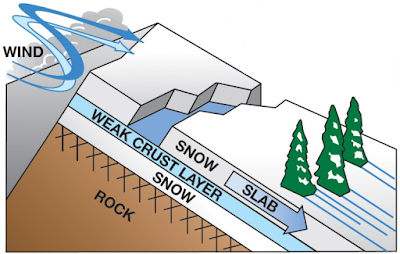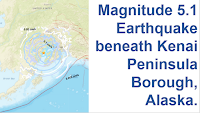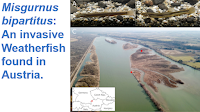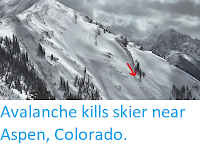A skier has died and a second has been injured following an avalanche on Breccia Cliff in Togwotee Pass, Teton County, Wyoming, on Saturday 4 January 2024. The deceased has been identified as Kenneth Goff, 36, from Lander in Fremont County, Wyoming, who is described as having been a nurse and experienced mountaineer. The skiers are reported to have been part of a party of four who were ascending a slop on skins (strips of material which are attached to the bottom of skis to prevent backsliding, enabling the skier to climb slopes), when they caused a large slab of snow to come loose, burying Goff, and causing injuries to the lower leg of a second skier.
Avalanches are caused by the mechanical failure of snowpacks; essentially when the weight of the snow above a certain point exceeds the carrying capacity of the snow at that point to support its weight. This can happen for two reasons, because more snow falls upslope, causing the weight to rise, or because snow begins to melt downslope, causing the carrying capacity to fall. Avalanches may also be triggered by other events, such as Earthquakes or rockfalls. Contrary to what is often seen in films and on television, avalanches are not usually triggered by loud noises. Because snow forms layers, with each layer typically occurring due to a different snowfall, and having different physical properties, multiple avalanches can occur at the same spot, with the failure of a weaker layer losing to the loss of the snow above it, but other layers below left in place - to potentially fail later.
Emergency services in Teton County were alerted to the location of the avalanche by an automated call from an iPhone, however, this only provided the location of the incident, not any information about it. This led to multiple rescue teams being deployed, utilising skis, snowmobiles, and a helicopter. In the event, both the helicopter and snowmobiles were forced to turn back due to bad weather, but a party of volunteers on skis was able to reach the location of the avalanche and effect a rescue. Teton County Search and Rescue have warned outdoor sports enthusiasts to be aware of weather conditions when planning expeditions, and also to place limited reliance on automated calls from mobile phones as a way of contacting the emergency services, as these are relatively new technologies and only provide limited information; they advise always backing this up with an actual call or text if possible.
See also...



.jpg)















































